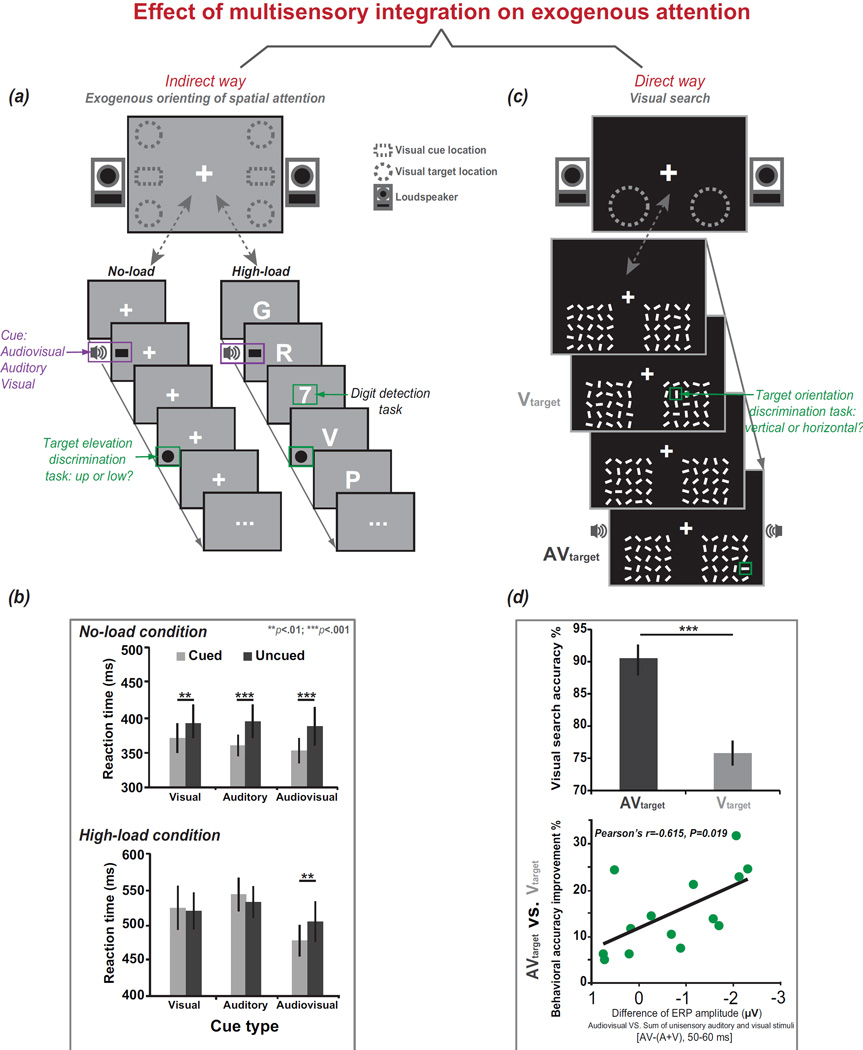Figure 4.
Effects of multisensory integration on exogenous attention. Multisensory integration acts on exogenous attention indirectly or directly. The indirect manner (a) can be observed when the exogenous cueing paradigm and an attentional/perceptual load are applied. As illustrated here, a non-predictive peripheral cue appears; this cue consists of the presentation of auditory stimuli from the two speakers located to the left or right of the monitor, the presentation of visual stimuli within the dashed squares on the monitor, or presentation of audiovisual stimuli. The target is presented in one of the corners of the display (as indicated by the dashed circles). In the no-load condition (a: left panel), the participants were asked to complete a target elevation discrimination task, i.e., to report whether the target appeared at the top or bottom of the screen. In the high-load condition (a: right panel), the participants were asked to complete not only the target elevation discrimination task but also a center RSVP task in which they were required to detect a digit among distractor letters. (b) Consequently, in the no-load condition, all types of cues can capture attention and elicit significant spatial cueing effects; however, in the high-load condition, only the audiovisual cue elicits a significant spatial cueing effect (Santangelo and Spence, 2007). The direct manner (c) can be observed when the visual search paradigm is applied. In this paradigm, visual search displays were presented in two dashed circles. The distractor lines changed orientation, and one of them changed into the target line, i.e., the vertical or horizontal line. The participants were asked to discriminate the orientation of the target, i.e., vertical or horizontal. The visual target orientation change was accompanied (AV) or not accompanied (V) by an irrelevant auditory stimulus. (d) Consequently (Van der Burg et al., 2011), the responses in the AV condition were found to be more accurate than those in the V condition, and the ERP amplitude elicited in the AV condition differed from the sum of those elicited by the unimodal auditory and visual stimuli (A+V). Further, the value of [AV−(A+V)] that was calculated during the 50–60 ms post-stimulus epoch was significantly correlated (p<.05) with the improvements in behavioral accuracy (AV vs. V). Adapted with permission from the corresponding authors (Santangelo and Spence, 2007) [Copyright 2007 by the American Psychological Association] and (Van der Burg et al., 2011) [© 2010 Elsevier Inc. All rights reserved.]

